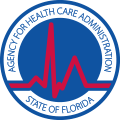What is Oxycodone Abuse
Understanding Oxycodone Abuse
OxyContin, also known as oxycodone, is a synthetic opiate painkiller that is prescribed for individuals who are suffering from moderate to severe pain. OxyContin is a very helpful drug for individuals who are facing consistent chronic pain that occurs with some types of cancer, bone pain, heart attack, and severe burns. The time-release formulation provides hours of pain relief for individuals in need of pain management. Oxycodone is only available through a prescription from a licensed physician. However, unfortunately a significant amount of oxy is now being sold on the street.
When used, oxycodone produces a pleasurable high that is caused by stimulation of the reward center of the brain and elevates the levels of the neurotransmitter dopamine. Individuals who abuse oxy usually do so by snorting, chewing, or injecting it intravenously. After a period of time, individuals develop a tolerance to this medication and require higher doses in order to achieve desired effects. The consistent cravings that result from tolerance to oxy cause individuals to continue to use the substance to reduce the cravings and avoid the unpleasant withdrawal symptoms.
Many individuals who abuse oxy also abuse other substances. Some individuals may combine OxyContin with other downers such as benzos or alcohol in order to further the high. This combination can be particularly dangerous since downers lead to respiratory depression, and the combination of multiple downers can cause death. Others combine Oxy with stimulants such as amphetamines, cocaine, or meth. This combination of drugs can also lead to deadly consequences such as heart attack and stroke.
If used appropriately OxyContin can be a wonderful medication that effectively relieves pain. However, if an individual becomes addicted, a future of negative consequences lies ahead.
Statistics
Statistics of Oxycodone Abuse
It’s estimated that 9% of all adults in the United States have or will abuse opioid narcotics in their lives. The U.S. Department of Justice estimated that over 13 million individuals in the U.S. used oxycodone for recreational purposes.
Causes of Oxycodone Abuse
What are the Causes of Oxycodone Abuse
Research has yet to determine a single cause for the development of addiction. It is likely that addiction is the result of a number of factors working together. These causes may include:
Genetic: Addiction has been shown to run in families. Those who have family members that are struggling with substance abuse and addiction problems are more likely to suffer from addiction themselves. Once you have started using a drug, the chances of it developing into an addiction may be influenced by your inherited traits.
Physical: It has been hypothesized that some people are born with decreased levels of dopamine and a defect in the pleasure center of the brain. These individuals may attempt to correct the defect by using narcotics such as oxy. Many individuals struggle with underdiagnosed or untreated mental illnesses and are trying to cope with the associated symptoms. Due to the overwhelming unpleasantness of mental illness symptoms, individuals take oxy as a means of self-medicating. Additionally, using substances such as oxy in a repetitive manner alters the way in which the brain feels pleasure. The drug causes physical changes to the brain that affect how neurotransmitters communicate with the rest of the brain.
Environmental: All environmental factors, such as your family’s beliefs and attitudes, your peer groups, socio-economic status, and lack of family involvement, have a role in the development of an addiction disorder. For example, individuals who grow up in a home where addiction is present may learn that substance abuse is an appropriate way to handle negative emotions and cope with life stressors. This increases the likelihood that an individual will develop an addiction later in life. When individuals who are desensitized to substance abuse face stress, they reach for the oxy because they don’t know a better way to cope with the negative emotions.
Risk factors:
- Being male
- Having another existing psychological problem
- Suffering from anxiety, depression, or loneliness
Signs and Symptoms of Oxycodone Abuse
Learn More About the Signs and Symptoms of Oxycodone Abuse
The symptoms of OxyContin addiction vary among individuals. Symptoms will depend upon the length of addiction, the frequency of use, and amount of oxycodone used. Symptoms common to oxy abuse include:
Behavioral symptoms:
- Lying
- Multiple doctor visits
- Forging prescriptions
- Borrowing or stealing pills
- Constantly losing prescriptions
- Neglecting all responsibilities
- Engaging in risky behaviors
Physical Symptoms:
- Dizziness
- Itching
- Track marks on arms and legs
- Headaches
- Dry mouth
- Constipation
- Nausea and vomiting
- Lightheadedness
Cognitive Symptoms:
- Hallucinations
- Paranoia
- Delusions
Psychosocial Symptoms:
- Mood swings
- Depression
- Euphoria
- Anxiety
- Irritability
- Becoming socially withdrawn
Effects of Oxycodone Abuse
Understanding the Effects of Oxycodone Abuse
The effects of oxycodone addiction can cause negative effects in almost all areas of an individual’s life. Common effects of long-term oxycodone use include:
- Loss of friends and family
- Marital problems, often ending in divorce
- Loss of job or expulsion from school
- Financial struggles
- Homelessness
- Seizures
- Accidents
- Cardiovascular damage
- Soft-tissue infections
- Liver disease
- Kidney disease
- Legal issues
- Communicable diseases like HIV
- Respiratory distress
- Coma
- Death
Effects of Withdrawal and Overdose
Learn More About the Effects of Withdrawal and Overdose
Withdrawal: After an individual stops or reduces the amount of medication after a prolonged period of abuse of OxyContin they can experience a wide range of withdrawal.. Symptoms of withdrawal can range from mild to severe, depending on how much of the drug has been taken and how long it has been abused. Symptoms of oxy withdrawal include:
- Agitation
- Anxiety
- Sweating
- Muscle aches
- Insomnia
- Dilated pupils
- Abdominal cramping
- Nausea and vomiting
Overdose: Overdosing on OxyContin can be fatal. The specific effects of an overdose on this drug can vary depending on the dosage and whether or not it was taken with any other medications or substances. Some symptoms of an overdose may include:
- Cold and clamminess
- Slow heart rate
- Cardiac arrest
- Extreme drowsiness, leading to a coma
- Weak or limp muscles
- Low blood pressure
- Loss of life
Co-Occurring Disorders
Treatment for Co-Occurring Disorders
Many with addictions have co-occurring mental illness. The most common co-occurring disorders include:
- Depressive disorders
- Anxiety disorders
- Bipolar disorder
- Schizophrenia
- Alcoholism
- Other substance abuse disorders











